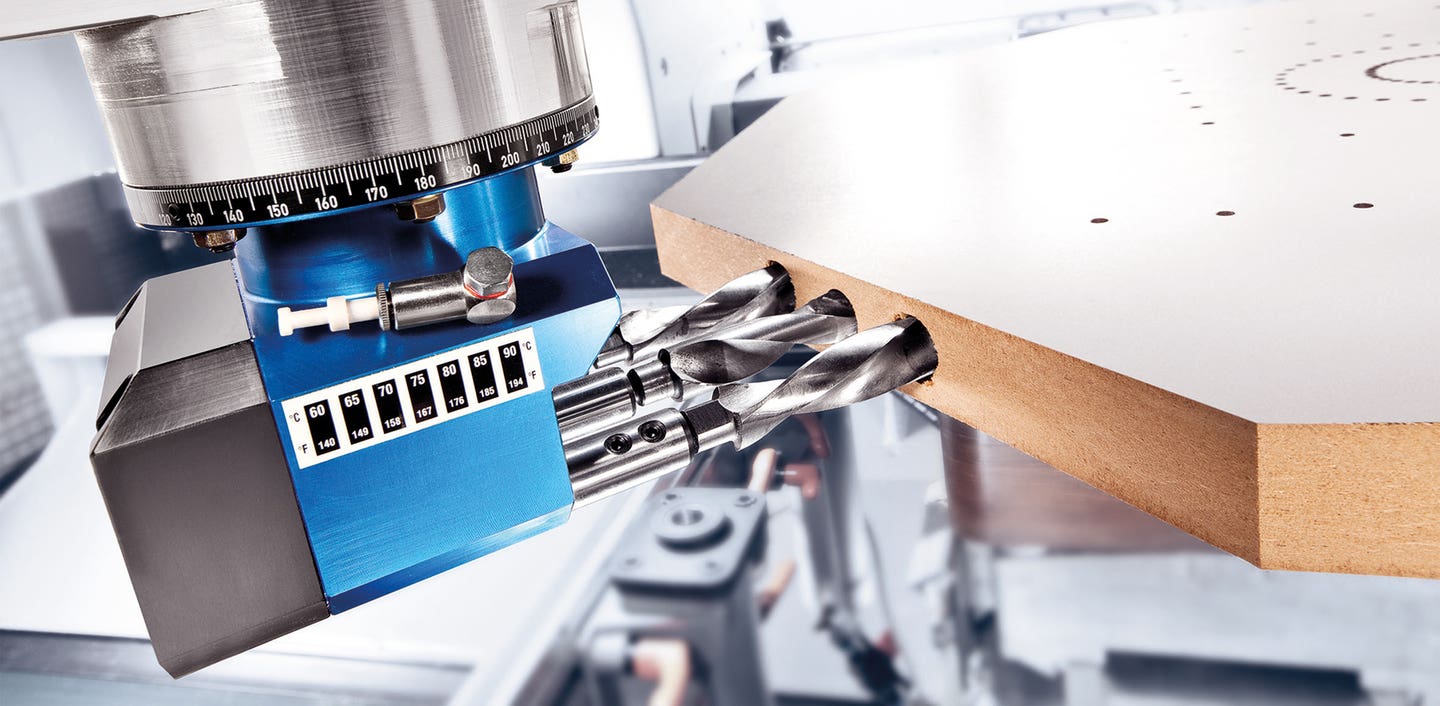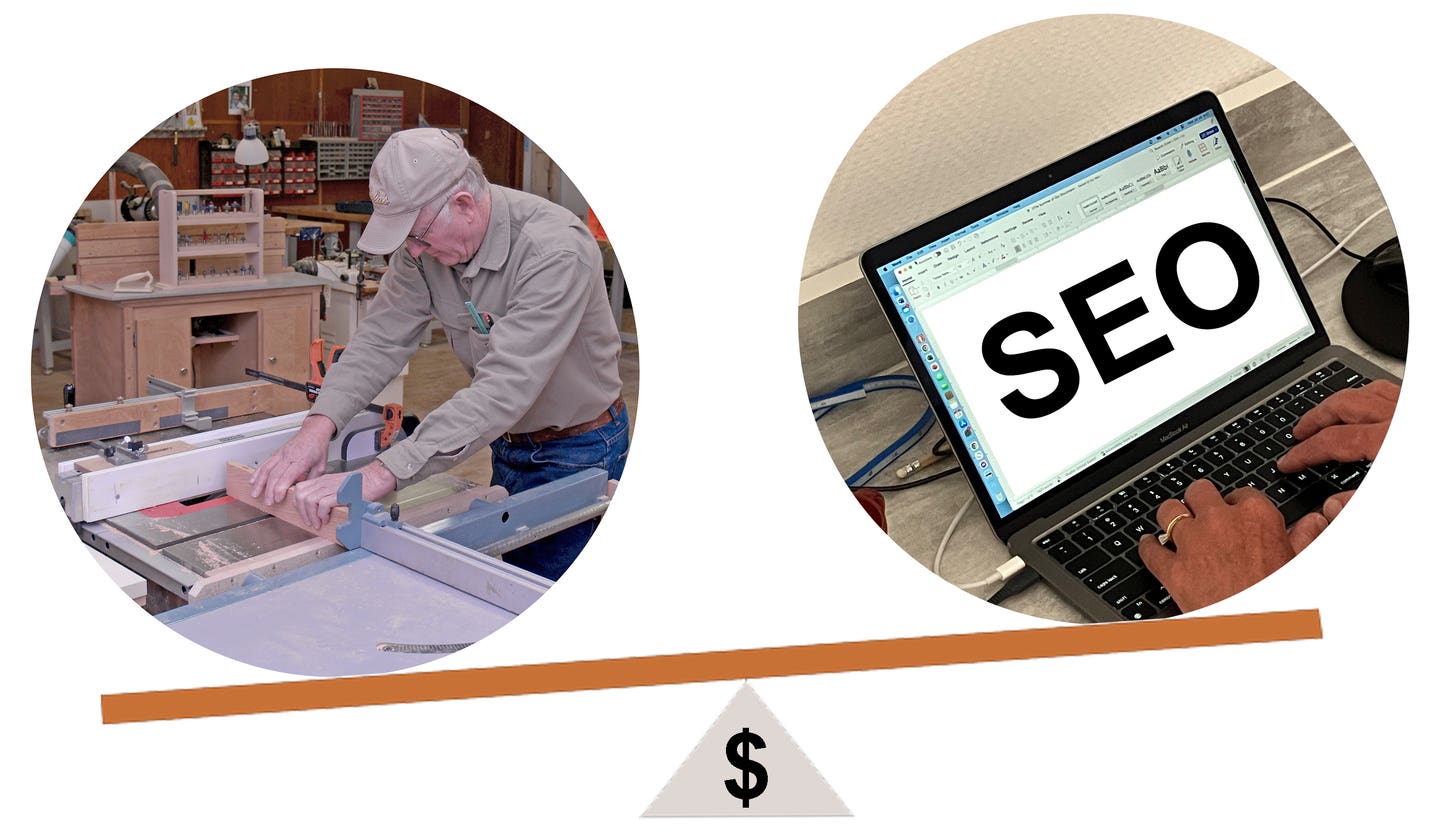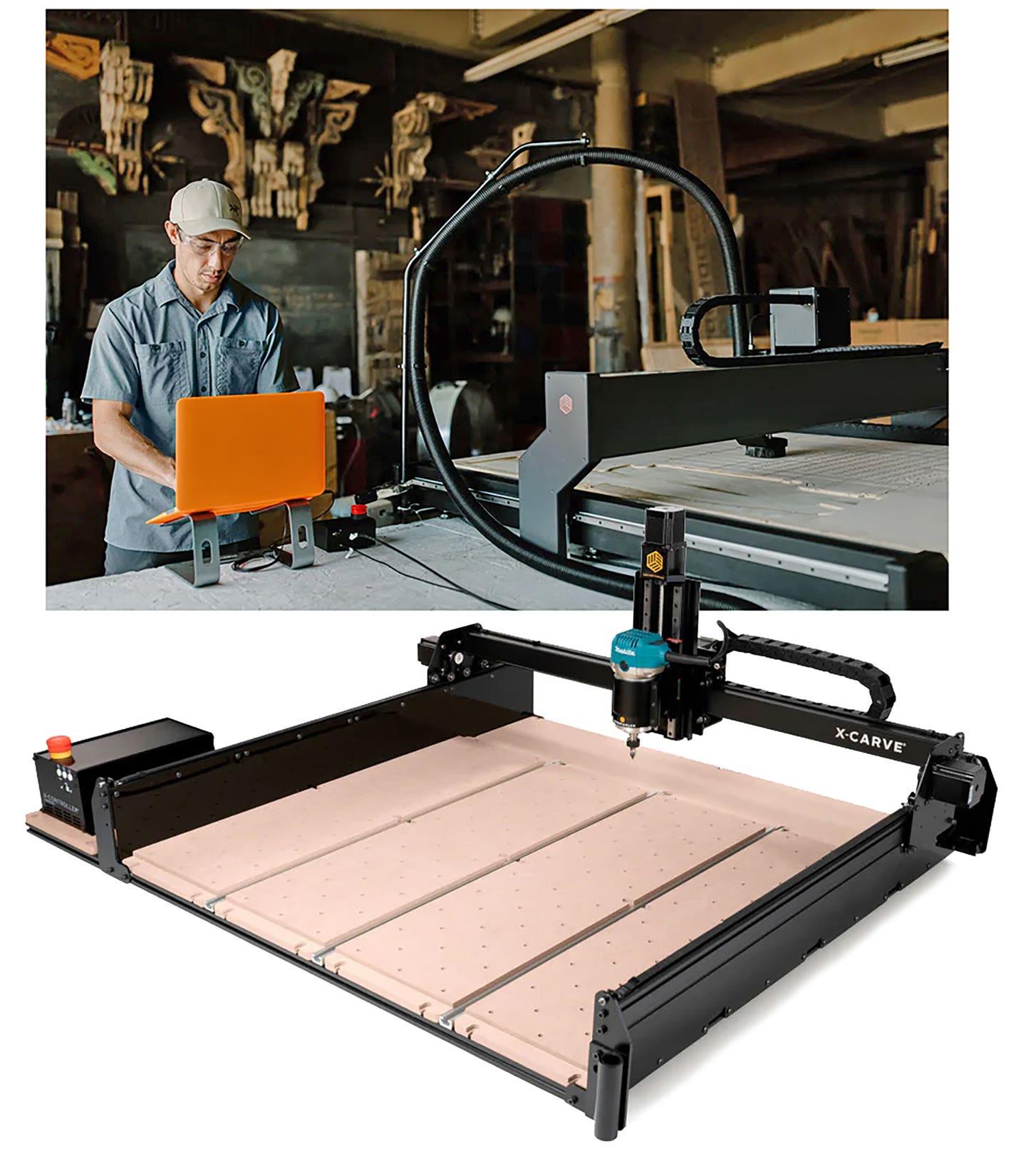Choosing CNC software
Sorting through the myriad of design and machining options
Many woodshop owners and managers feel a bit challenged when it comes to software. They’re woodworkers, not engineers or programmers, and it’s a different skill set. Learning about new technologies can be daunting at best and is often utterly confusing.
CAM software for running a CNC might be less of a challenge than CAD. That’s because woodworkers are used to setting up and running machines, so that can make things a little more intuitive. But learning how to use professional CAD design software requires a huge time commitment and it can be quite intimidating. Even when the basics are conquered, the vast potential of most programs can leave woodworkers feeling as though they’re not getting enough out of the tool.
They know they can do more, but how?
Working in 2D is manageable for most of us, but when that third dimension comes along, it can leave one dazed and confused. Yes, over time osmosis seems to work. We absorb a grain here, a speck there, and soon we’re almost functional, until a new version updates automatically in the middle of the night. Most shop projects can be drawn in 2D and sent to the shop floor, and this is what the industry used for centuries: simple scaled plan views, elevations and section drawings. Shop owners without a CNC might feel as though they can do drawings on paper just as fast as CAD, but those lucky enough to have a CNC know that they can create parts lists and labels and send the job to the machine using files that were generated from their drawings.
3D modeling is a great tool for furniture designers and builders. Being able to twist and turn an object in virtual space and see how its elements relate to each other is a real joy, especially when one is defining scale and working to size. And for cabinetmakers, most CAD programs now have rendering functions that will deliver at least a well-drawn, full-color, 3D sketch, and usually a photo-quality simulation of a completed project.
There was a time when we looked at CAD and CAM as separate tasks, but almost all of today’s software packages handle both jobs and have options to do with marketing, inventory, time tracking and production issues. As much as phones have taken over our lives, software is taking over the shop. It’s an immersive experience that continues to automate more and more chores, and finesse those that are already in its purview.
On top of that, artificial intelligence (AI) is just beginning to peep over the horizon at us. Until now, computers have been able to handle our questions because we gave them all the answers, and they just had to search through the data to find the most relevant solution. The next generation of software (and it is already here) can ‘think’. It can combine and interpret data to generate a unique and completely new answer – not just a verbatim response that was programed into its memory. It is deductive reasoning that has been flavored with nuance. Humans reason deductively too, but they also use emotional responses and perception (such as noting somebody else’s body language or personal preferences) to make decisions. The software is now beginning to simulate those responses, and it’s catching up with us very quickly.
In the woodshop, AI is beginning to help us optimize workflows, production sequences, and data analysis. It is also lending a hand with maintenance, predicting when elements of a machine or tooling may succumb to wear patterns or lubrication reduction, and require our attention. As we continue to automate and perform more tasks on CNCs rather than using traditional equipment such as table saws and routers, AI is being used to monitor more machines to minimize downtime, increase production, reduce rejects, and improve quality.
It's important to keep this evolution in mind when choosing CNC software. It’s where we’re all headed.
Comprehensive programs
Woodworkers using Alphacam have watched it evolve into what its parent company, Hexagon (hexagon.com), describes as “intelligent and intuitive CAD/CAM software.” It’s a professional CNC software solution with a core package that allows a woodshop to import drawings, generate toolpaths, simulate a production run, and create reports. There are many different modules that can be added to the core, including xPositional for machining on an angle; xSimultaneous, which supports 5-axis machines; xNesting for optimized nesting of parts; xFixtures to control the design, placement, and simulation of clamps and fixtures; and xRobotics, which gives a woodshop the ability to output tooling and toolpath data for third-party robotic post processors.
Hexagon describes its Cabinet Vision package as “the industry leading design for manufacturing software for residential cabinet manufacturers.” The package contains options for residential cabinetry, commercial casework, closets and storage. Modules include x2AC, which allows users to output native Alphacam drawings; Design, xCRM for customer contact management; xShaping, and xRendering, among others.
The new version Essential from CabBuilder (cabbuildersoftware.com) lets the woodworker create and manage libraries of designs, and access plans from thousands of ProKitchen designers and dealers. It draws with a real-time 3D rendering window that delivers instant visual feedback as a project is edited. As with most comprehensive CNC software packages, the CabBuilder Workshop module will optimize cutlists and nest them on panel stock. Workshop will also keep track of cuts and mark deficient materials for re-nesting and generate labels for parts organizing. The CNC module in CabBuilder converts drawings to machine program codes and simulates the generated toolpaths to give a full picture of how the machine will act. Plus, there’s a cut job management system to keep track of projects and unused materials.
Cabinet Pro (cabinetpro.com) has purchase and rental rates that the company says brings “CNC technology into the price range of even the small one-man cabinet shop.” The program will deliver detailed shop and finished drawings including floor plans, 3D renderings and elevations. It generates unlimited user-defined cutlists, material and door reports, bidding and invoicing. It will also optimize panels and deliver automated CNC processing. Packages include cabinet and door drawing software for both traditional machines and CNCs.
CabMaster Software (cabmastersoftware.com) offers Cabinet Design, a 3D design generator with plan and elevation views and output to a cutting list. Other elements in the suite are Cabinet Machining, which can create a list of cabinets and DXF files with all drilling and machining; Part Machining, which can create shaped parts and output for full machining, and Door Machining for profiles and output to machines. The profiles can be controlled parametrically and reused as is, resized, or as a template for a new design.
Updates and options
The new edition of Cabwriter (cabwritersoftware.com) is described by the publisher as “offering enterprise level capabilities at entry level prices.” Several features have been added, including sheet good optimization for manual cutting or the option to use CabWriter CNC to export nesting. Another new feature is the ability to draw drawer boxes with each of the parts appearing on the cutlist and/or in the DXF files. The new version also supports edge banding slab doors and drawer fronts. Cabwriter uses the power and ease of Sketchup Pro to render cabinets.
EasyWood from DDX (ddxgroup.com) is a CAD/CAM suite for cabinet and furniture builders that the publisher says is “simple and intuitive, all functions are at a click, and it can also be used by those who have no particular computer skills.” It handles panels, nesting, a wide selection of file format imports and exports, parametric drawing, 3D modeling, vectoring, aggregates, simulations for collision avoidance, and machining for 3-, 4- and 5-axis CNCs.
EnRoute from SAi (thinksai.com) is a CNC software solution for everyday cutting, nested-based production, and creative design applications. It provides a combination of 2D and 3D design and toolpath capabilities for CNC routers. EnRoute can find inside corners and automatically apply a relief to create a sharp corner, giving a finished piece the feel of a more traditional woodworking job. It can also simulate a rendered view of the design to catch mistakes before output of the final piece. And all tool shapes are accurately drawn, allowing both 2D and 3D toolpaths to be rendered.
KCD Software (kcdsoftware.com) offers lean solutions that are geared to the way a shop likes to build. It lets the woodworker design and price on the fly using easy-to-set manufacturing details. For CAM, it offers a one-button solution which is part of a concerted effort to make the suite easy to learn. There is excellent phone support, no annual maintenance fee, free upgrades, and a shop can rent the software for 31 days. It handles frame and frameless construction and has cloud-based sharing capabilities that make it simple to share specific files between the supplier, shop, office and homeowner. KCD also works with Cabinotch, which lets a woodshop outsource machining of custom cabinet boxes, doors and drawers directly from a design.
Mozaik Software (mozaiksoftware.com) is a design-to-manufacture solution for shops using either traditional machines or CNCs. The basic suite, Manufacturing, is recommended for non-CNC cabinet shops and is used for designing, visualizing, generating door lists, drawer box lists, cut lists, hardware and material requirements, submittal drawings and other manufacturing essentials. Mozaik CNC includes that plus nesting, machine-ready G-Code, and more. And the company’s Enterprise solution is tailored for larger custom cabinet shops with features designed to enhance workflow, minimize risks, manage users, and eliminate production errors. Everything in Mozaik is communicated to the shop floor through paperless tablet applications for labeling, cutting and assembling.
Other solutions
There is an endless well of software options, and each has its own dedicated family of users. Some are best suited to large production environments, while others are tailored to the needs of small, even one-man shops. A few are quite popular with skilled hobbyists who own a desktop or basic CNC. The best way to navigate through the options is to visit discussion boards on woodworking websites, or visit a large industry show and start some conversations.
Following is an alphabetical survey of many of the more popular packages:
Architects and engineers often favor AutoCAD (autodesk.com), which is an industry standard that lets a draftsman design and annotate 2D geometry and 3D models with solids, surfaces, and mesh objects. It can automate drafting tasks to place objects with AI, compare drawings, create schedules, publish layouts, and more. AutoCAD 2025 includes industry-specific toolsets, new automation, and insights that can access and track essential design data using detailed multi-user event logs with version history.
At the other end of the spectrum, Crafty Amigo (craftyamigo.com) is a free app that has a huge parts library for small shops and hobbyists to design their own solutions.
EPIK (epikltd.com) offers CNC software for CAD/CAM/CAE (computer-aided engineering), and ERP (enterprise resource planning).
Eurosoft (eurosoftinc.com) offers modules including BlueCell for optimization, nesting and automation software; InStock for organizing and tracking stock material and reusable remnants on the factory floor in conjunction with a shop’s optimizer; and ImPrint, which can print labels with detailed part information, barcodes, drawings and other images.
Fusion 360 is a popular AutoDesk product that offers CAD, CAM and CAE for Windows and Mac, plus simplified versions available as apps for Android and iOS.
MacDraft (microspot.com) is a relatively inexpensive 2D CAD software that is native to MacOS. The newest version, MacDraft 8, is designed for architects, engineers and construction services as well as professional CAD users, designers, educators and hobbyists.
Microvellum Software (microvellum.com) is a drawing solution for projects that include everything from simple cabinetry to advanced configurations for residential and commercial applications. It includes industry standard CAD toolsets for designing with automation, estimating, planning, manufacturing and production. Microvellum’s clients include shops that produce architectural millwork, residential cabinetry including kitchens, baths, and closets, as well as commercial interior fit-outs in office, hospitality, education, and healthcare environments.
RouterCAD (routercad.com) is an all-in-one solution for woodworking cabinet design, door design, and drawer design. This software from the manufacturer of the Boss CNC provides a CAD-based drawing engine, cabinet libraries, cross sections, assembly sheets, material optimizer, custom report center, cabinet and part labels, and submittals and title blocks. There are quick-start templates, and it lets a woodworker choose a cabinet design template or door design template that is most similar to the project at hand, and then customize it.
RSA Solutions (rsasolutions.com) offers several modules that can help a shop streamline activities, such as estimating, customer management, project management, manufacturing processes, purchasing and inventory.
SelfCAD (selfcad.com) is a 3D modeling software with built-in interactive tutorials. A woodworker can access it through a browser or download it to work offline, and there is email-based support. There’s a free version and SelfCAD Pro, which costs $14.99 per month.
Shapr 3D (shapr3d.com) models 2D drawings and works on iPad OS, MacOS, and Windows. The basic version is free, while a Pro version costs $25 per month.,
Sketchlist 3D (sketchlist.com) is designed for woodworkers and uses familiar terms and practices. It involves just three steps: inserting virtual boards, cutting them to size, and locating them in the design. The model appears instantly on the screen, and the software automatically generates the layouts, spreadsheets, drawings, and cut lists.
Long a favorite among hobbyists and small shop owners, SketchUp for Woodworking (sketchup.com) offers “the joy of drawing by hand and the ease of super-smart 3D modeling software.” It’s an easy-to-use 3D modeler that lets a woodworker think through and pre-build projects on the computer before tackling them in the shop. This free program is one of the easiest ways to learn how to draw in 3D.
SolidWorks (solidworks.com) provides “a common model for developing complete and accurate designs that can be leveraged across planning, equipment design, layout, fabrication, and construction.” It will also create photorealistic renderings and fabrication drawings.
TurboCAD (turbocad.com) is a CAD software application for 2D and 3D design and drafting that runs on MacOS and Microsoft Windows.
And Vectric (vectric.com) is an employee-owned software development company specializing in applications that are “designed to make cutting parts using CNC technology a highly productive and enjoyable experience.” Its product line includes Aspire, VCarve, Cut2D and Cut3D.
Originally published in the May 2024 issue of Woodshop News.







